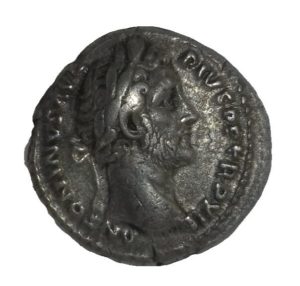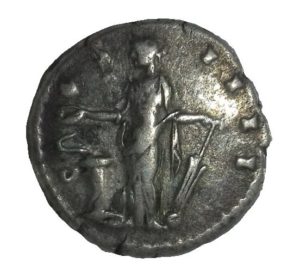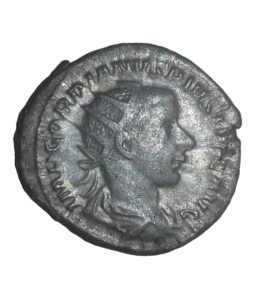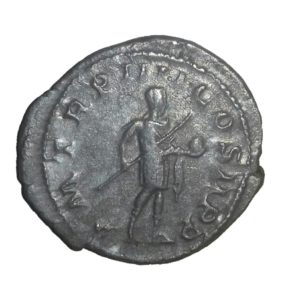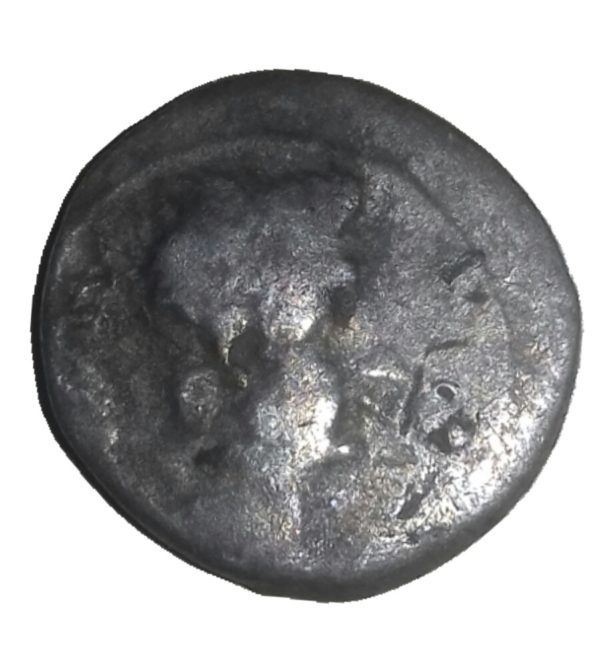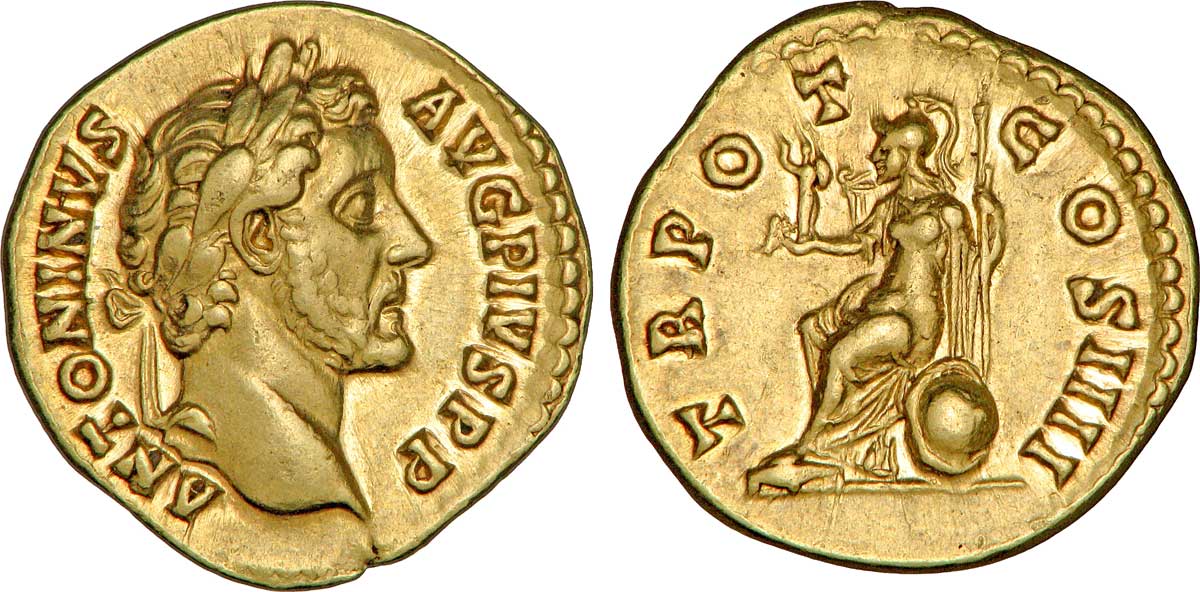Last week, I introduced you to the different types of Roman coins in bronze. Indeed, I had made short presentations on sesterces, as, dupondius … If you haven’t read it, go read it : Roman coins in Bronze. So I have to do an article on the different types of Roman coins made of silver. As in the previous article where I talk about bronze, copper and brass, I will talk here about silver but also its derivative: the billon. So here are the Roman silver coins. Have a good read.
The denar
The most typical Roman silver coin and the best known is of course the denar. This type was one of the basic coins of the monetary system of the Roman Empire. Its name : “denar” means ten because it is worth 10 as. Several dates are mentioned concerning its creation but it can be said with near certainty that it was created in 269/268 BC according to Pliny the Elder and Tite-Live. So we can assume that they are true. Also, some coins has been found in archaeological excavations dated to 211 BC. We therefore know that the denar predates that date.
At the time of its creation, it weighed about 4.5g and was about 18 mm in diameter. Subsequently, several reforms were created and its weight gradually decreased from 4.5g to 4.2g and then to 3.7 in the 2nd century BC. At that time, the denier only showed people who had never existed as allegories or Gods and Goddess and, dead people.
It was only when Julius Caesar was in power that the first person still alive appeared on a denar. It was, of course, Julius Caesar himself. In 145 BC, the denar had its exchange rate changed and is now worth 16 aces, but its weight was not changed. Subsequently, this coin, having always retained an important place in the Roman monetary system, lost the latter when Caracalla created the Antoninianus. Following the appearance of this new coin, the last was gradually disappeared and fell completely into oblivion during Gallien’s reign. The denar truly marked the history of Ancient Rome and even today, this name is used for some of our modern coins.
The Antoninianus
The Antoninianus is a coin that, like the sesterce, is composed of an alloy. Indeed, it is made in a metal called “billon” which is a mixture of copper (50%), silver (50%). It was created in the 3rd century, specifically in 215 AD by Caracalla as a coin worth two denar. Thus, it is at the origin of the beginning of the fall of the denar. At first, the Antoninianus was like the denar, made up of money but quickly it was devalued and was thus struck in a log. It was then abandoned in 240 AD and re-introduced under Gordian III. It was at this time that the denar and really abandoned. Subsequently, during the reigns of Gallien and Valerian, the Empire faced many economic difficulties and was therefore forced to produce more coins.
As a result, many Antoninianus are hit with a steadily declining rate of money. Indeed, shortly after its creation, they were made up of 50% silver for just over 5 grams and then, during the last year of Valerian’s reign, only 10% for less than 3 grams and then not even 1% for not even 3 grams under Gallien.
During this period of deep depreciation, real and false coins were confused in coinage and were used equally. Under Aurélien, the Antoninianus regains a bit of vigour. Indeed, it is renamed “aurelianus”, weighs nearly 4 grams for about 5% and also the “double aurelianus” with the same weight but almost 10% silver. These two evolutions of the Antoninianus were used until the end of the 3rd century and then their circulation ceased under the reign of Diocletian. The Antoninianus continued to be used in the 4th century but in the form of a barbaric strike.
The quinar
The quinar is a Roman silver coin first issued at the end of the 3rd century BC, during the 2nd Punic War. The name “quinar” was also used to refer to a gold coin, but we will come back to it in the next article. It appeared during the same period as the sesterce and the denar. This coin was basically worth a half denar or 5 as.
This coin, of course, consisted of silver, weighed about 2 grams and had a diameter of about fifteen millimetres. Subsequently, during the re-evaluation of the denar, the quinar value went from 5 as to 8 as. It was then devalued during Nero’s monetary reform and gradually disappeared from circulation. Other copies were struck later, notably under Diocletian. But the latter were not silver like their predecessors but copper.
The cistophorus
The cistophorus is the largest Roman coin made up of silver. It was created around 170 BC in the Greek city of Pergamon. When the latter was taken by the Romans, the Romans began to use this coin. So they created their own prints. Moreover, the cistophore was more of a colonial coin. Indeed, it was only struck in monetary workshops belonging to colonies such as Asia Minor or Greece. But, it was also mainly used outside of present-day Italy.
As I said earlier, the cistophorus was the largest Silver Roman coin. It measured about 25 mm for about 10/11 grams, more than three times the weight of a denar. This coin was used after the capture of Pergamon by the Romans in the 80-70 BC until Hadrian’s reign (117-138 AD). As a result, its manufacture was halted.
Siliqua
Siliqua is a silver coin that appeared late during the Roman Empire. It was introduced into coinage under Constantine I with a weight greater than 2 grams and about 16 mm in diameter. At that time, it took 24 siliquas to have a solidus of gold (we’ll talk about it in the next article). Subsequently, in the second half of the 4th century, its weight rose to 2 grams. However, the solidus/siliqua ratio remained the same.
During this period, it was heavily minted and then, at the end of the 4th century, its weight fell below 1.4 grams but still retaining the exchange value between solidus and siliqua. Its manufacture ceased under Valentinian III and it was the last to issue copies of this coin. The siliqua remained in force only for a short period of time, but it remained long enough to mark the 4th century.
The Argenteus
The Argenteus is just like siliqua a late silver coin of the Roman Empire. It was introduced in the late 3rd century by Emperor Diocletian. This coin therefore weighed almost 3.5 grams and was about 20 mm in diameter. These coins can be compared to the coins that was still in place several decades before the appearance of the silvers. However, they were not used over a long period of time like most other types of roman coins. Indeed, its production ceased in 312 AD. Thus, it was struck only for twenty years, a short period on the scale of the Empire. Therefore, this coin is rather rare today. Indeed, it was not produced in large numbers and is often in good condition.
The miliarense
The miliarense is also like the two coins presented previously, a coin that appeared late during the Roman Empire. It was introduced by Constantine I. Thanks to its characteristics, it can be compared to the argenteus. Indeed, it usually weighs in 4.5 grams for about 24 mm in diameter. Also, there are two types of miliarenses: “light” and “heavy” miliarenses. The “light” being struck from their creation until the end of the reign of Valentinian I. The “heavy” being struck by Gratian until the end of the Roman Empire. They can also be differentiated according to their weight. The miliarense is also a coin like argenteus rather rare because of the few copies produced and it is also a very interesting coin.
So much for The Silver Roman Coins. I hope you liked this article and that it will have you why not discover types of coins that you did not know. Mark in the comment space what type of coin is your favorite. For my part, with regard to next week’s article, it will of course be on “Roman gold coins”. See you next week!
Get my book Around the Roman Coin for free by clicking here

